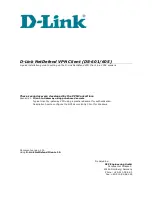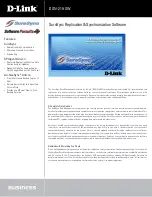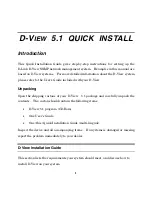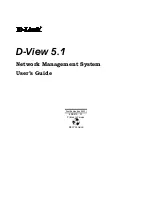
Using sFlow
ExtremeWare XOS 11.3 Concepts Guide
211
management port IP address as it’s IP address. You change the agent IP address by using the following
command:
configure sflow agent {ipaddress} <ip-address>
You unconfigure the agent using this command:
unconfigure sflow agent
Configuring the Remote Collector Address
You can specify up to four remote collectors to send the sFlow data to. Typically, you would configure
the IP address of each collector. You may also specify a UDP port number different from the default
value of 6343, and/or a virtual router different from the default of
VR-Mgmt
. When you configure a
collector, the system creates a database entry for that collector that remains until the collector is
unconfigured. All the configured collectors are displayed in the
show sflow {configuration}
command. Configure the remote collector using the following command:
configure sflow collector {ipaddress} <ip-address> {port <udp-port-number>} {vr
<vrname>}
To unconfigure the remote collector and remove it from the database, use the following command:
unconfigure sflow collector {ipaddress} <ip-address> {port <udp-port-number>} {vr
<vrname>}
Enabling sFlow Globally on the Switch
Before the switch will start sampling packets for sFlow, you must enable sFlow globally on the switch.
To enable sFlow globally, use the following command:
enable sflow
You disable sFlow globally with the following command:
disable sflow
When you disable sFlow globally, the individual ports are also put into the disabled state. If you later
enable the global sFlow state, individual ports return to their previous state.
Enabling sFlow on the Desired Ports
Enable sFlow on specific ports using the following command:
enable sflow ports <port_list>
You may enable and disable sFlow on ports irrespective of the global state of sFlow, but samples are not
taken until
both
the port state and the global state are enabled.
To disable sFlow on ports, use the following command:
disable sflow ports <portlist>
Summary of Contents for ExtremeWare XOS 11.3
Page 20: ...Contents ExtremeWare XOS 11 3 Concepts Guide 20...
Page 25: ...1 Using ExtremeWare XOS...
Page 26: ......
Page 38: ...ExtremeWare XOS Overview ExtremeWare XOS 11 3 Concepts Guide 38...
Page 58: ...Accessing the Switch ExtremeWare XOS 11 3 Concepts Guide 58...
Page 146: ...Configuring Slots and Ports on a Switch ExtremeWare XOS 11 3 Concepts Guide 146...
Page 218: ...Status Monitoring and Statistics ExtremeWare XOS 11 3 Concepts Guide 218...
Page 240: ...Virtual LANs ExtremeWare XOS 11 3 Concepts Guide 240...
Page 248: ...Virtual Routers ExtremeWare XOS 11 3 Concepts Guide 248...
Page 278: ...Access Lists ACLs ExtremeWare XOS 11 3 Concepts Guide 278...
Page 288: ...Routing Policies ExtremeWare XOS 11 3 Concepts Guide 288 entry deny_rest if then deny...
Page 344: ...Security ExtremeWare XOS 11 3 Concepts Guide 344...
Page 393: ...2 Using Switching and Routing Protocols...
Page 394: ......
Page 454: ...Spanning Tree Protocol ExtremeWare XOS 11 3 Concepts Guide 454...
Page 484: ...Extreme Standby Router Protocol ExtremeWare XOS 11 3 Concepts Guide 484...
Page 514: ...IPv4 Unicast Routing ExtremeWare XOS 11 3 Concepts Guide 514...
Page 530: ...IPv6 Unicast Routing ExtremeWare XOS 11 3 Concepts Guide 530...
Page 538: ...RIP ExtremeWare XOS 11 3 Concepts Guide 538...
Page 556: ...OSPF ExtremeWare XOS 11 3 Concepts Guide 556...
Page 566: ...OSPFv3 ExtremeWare XOS 11 3 Concepts Guide 566...
Page 589: ...3 Appendixes...
Page 590: ......
Page 640: ...CNA Agent ExtremeWare XOS 11 3 Concepts Guide 640...
Page 670: ...Glossary ExtremeWare XOS 11 3 Concepts Guide 670...
Page 698: ...Index ExtremeWare XOS 11 3 Concepts Guide 698...
















































